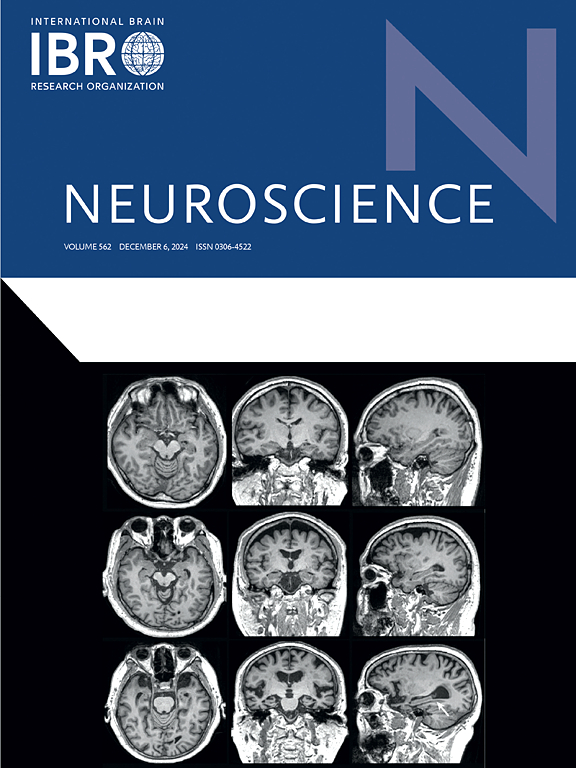Aberrant white matter function and structure in Rhegmatogenous retinal detachment: A study utilizing functional network clustering and TractSeg methods
IF 2.9
3区 医学
Q2 NEUROSCIENCES
引用次数: 0
Abstract
Rhegmatogenous retinal detachment (RRD) has been linked to abnormal functional changes in visual pathways and gray matter regions; however, alterations in white matter (WM) function and structure remain poorly understood. Using functional clustering networks and TractSeg methodologies, we investigated WM alterations in RRD patients and employed Support Vector Machine (SVM) algorithms for classification. RRD patients demonstrated reduced functional covariance connectivity (FCC) between the Superior Temporal Network and the Cerebellar Network, along with increased WM amplitude in the Anterior Corpus Callosum Network. Distinct differences in WM fiber bundles associated with visual and cognitive functions were observed, with visual acuity negatively correlating with amplitudes in the Occipital Networks. The SVM model based on WM7_amplitude achieved the highest AUC, highlighting its potential as a neurobiological marker for distinguishing RRD patients from healthy controls (HCs). These findings reveal critical disruptions in WM functional and structural integrity linked to cognitive and visual deficits in RRD, offering novel insights into the neural mechanisms underlying these impairments.

利用功能网络聚类和TractSeg方法研究孔源性视网膜脱离的异常白质功能和结构。
背景:以往的研究已经证实,在孔源性视网膜脱离(RRD)患者中,视觉通路和与视觉相关的灰质区域发生了异常的功能改变。然而,这些患者白质(WM)功能和结构特征的改变程度仍未得到充分了解。方法:在本研究中,我们采用功能聚类网络和TractSeg方法来研究RRD患者WM功能和结构的变化。随后,我们应用支持向量机(SVM)算法对RRD患者和健康对照(hc)进行分类。结果:与hc相比,RRD患者表现出颞上网络和小脑网络之间功能协方差连接(FCC)的显著降低。同时,在RRD患者中,胼胝体前网络内的WM振幅升高。此外,与视觉和认知功能相关的WM纤维束也存在显著差异。值得注意的是,RRD患者的视力与脑干网络和小脑网络的振幅呈显著正相关。基于WM7_amplitude的SVM分类AUC值最高,为0.6694。结论:本研究强调了RRD患者WM功能和结构完整性的异常变化,这可能与他们的认知和视觉缺陷直接相关。此外,wm7_振幅参数的变化可能作为区分RRD患者和hcc患者的神经生物学标志物。这些发现为RRD患者认知和视觉障碍的潜在神经机制提供了深刻的见解。
本文章由计算机程序翻译,如有差异,请以英文原文为准。
求助全文
约1分钟内获得全文
求助全文
来源期刊

Neuroscience
医学-神经科学
CiteScore
6.20
自引率
0.00%
发文量
394
审稿时长
52 days
期刊介绍:
Neuroscience publishes papers describing the results of original research on any aspect of the scientific study of the nervous system. Any paper, however short, will be considered for publication provided that it reports significant, new and carefully confirmed findings with full experimental details.
 求助内容:
求助内容: 应助结果提醒方式:
应助结果提醒方式:


